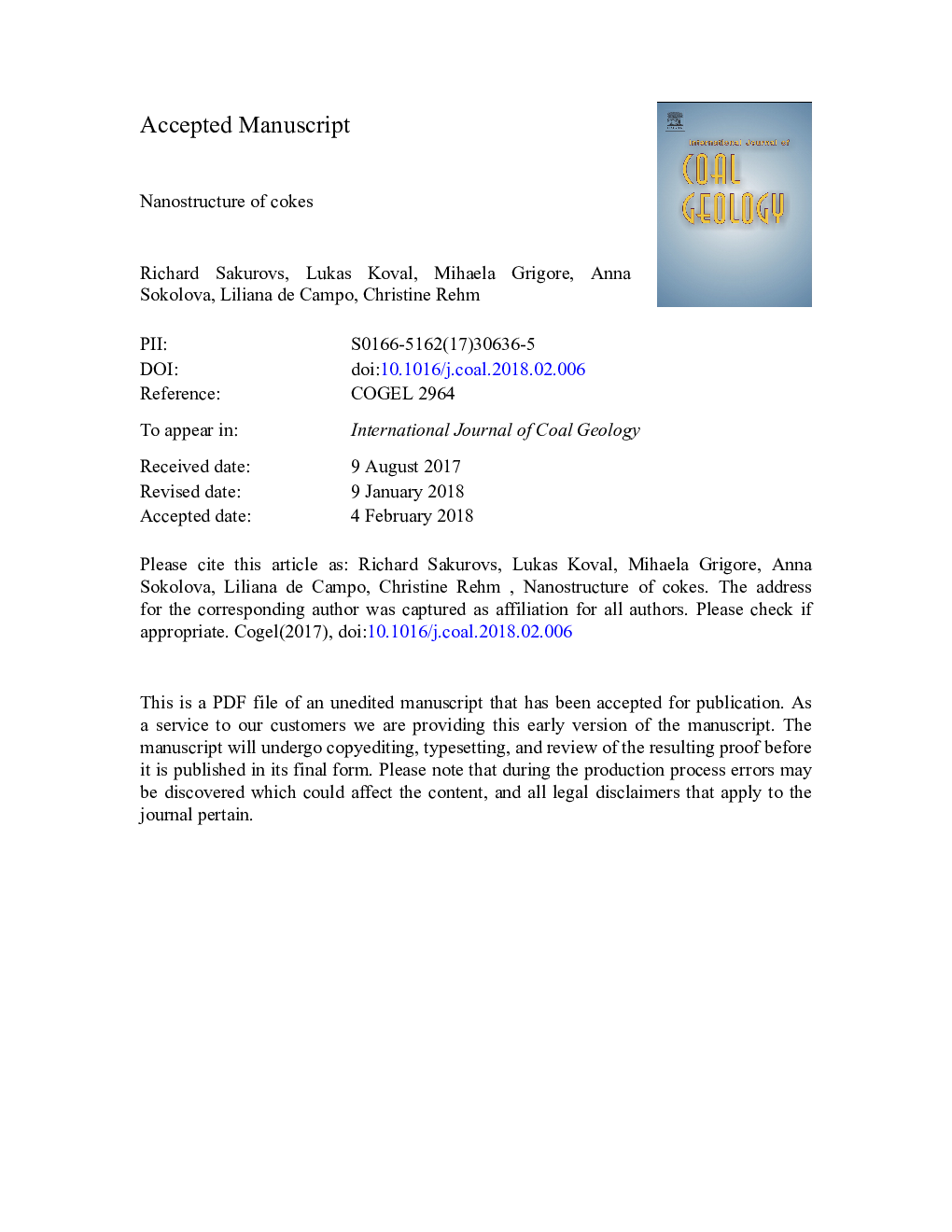| کد مقاله | کد نشریه | سال انتشار | مقاله انگلیسی | نسخه تمام متن |
|---|---|---|---|---|
| 8123540 | 1522515 | 2018 | 34 صفحه PDF | دانلود رایگان |
عنوان انگلیسی مقاله ISI
Nanostructure of cokes
ترجمه فارسی عنوان
ساختار نانو ذرات
دانلود مقاله + سفارش ترجمه
دانلود مقاله ISI انگلیسی
رایگان برای ایرانیان
کلمات کلیدی
کک انفجار کوره، قطر بینی، توزیع اندازه پورت، پراکندگی نوترون زاویه کوچک، اینرتینیت، تخلخل بسته
موضوعات مرتبط
مهندسی و علوم پایه
علوم زمین و سیارات
زمین شناسی اقتصادی
چکیده انگلیسی
Twenty eight cokes made from Australian coals and prepared under a range of experimental conditions were examined using Small Angle Neutron Scattering (SANS) and Ultra Small Angle Neutron Scattering (USANS) to determine the size distribution of all of their pores and also pores inaccessible to deuterated toluene (closed pores) in the size range 1 to 1000â¯nm radius. The main findings were that in all cokes, even those made from relatively inertinite-rich coals, nearly all pores of <5â¯nm radius were closed and >70% of the pores of 1000â¯nm in radius or larger were open. At intermediate pore sizes, the fraction of open pores was highly variable, with cokes made from inertinite-rich coals having more open pores. For all cokes made from coals sourced in Queensland, Australia, the number of open pores increased linearly with increasing inertinite content of the original coal and was not strongly affected by rank over the range investigated (0.9-1.3% mean maximum vitrinite reflectance). In contrast, all of the cokes made from the coals from the Illawarra region, New South Wales, Australia, had less than half the number of total or open pores than the other cokes. The number of pores of <5â¯nm radius decreased with increasing rank of the starting coal and was not strongly affected by the starting maceral composition or region of origin. The ratio of number of pores in cokes made from inertinite-rich concentrates to those made from the corresponding vitrinite concentrate from the same coal varied with pore size and was greatest at around 100â¯nm pore radius. The number of pores in cokes at all sizes below 1000â¯nm was largely unaffected by the bulk density of the charge, oven size or method of quenching. The insensitivity of numbers of nanometre-sized pores in coke to coke preparation conditions can explain why increasing the bulk density of a coal charge may increase coke strength but will have much less effect on coke reactivity to carbon dioxide.
ناشر
Database: Elsevier - ScienceDirect (ساینس دایرکت)
Journal: International Journal of Coal Geology - Volume 188, 1 March 2018, Pages 112-120
Journal: International Journal of Coal Geology - Volume 188, 1 March 2018, Pages 112-120
نویسندگان
Richard Sakurovs, Lukas Koval, Mihaela Grigore, Anna Sokolova, Liliana de Campo, Christine Rehm,
